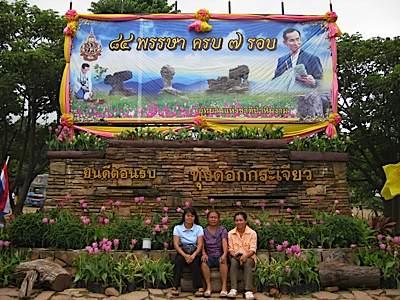Background to Thailand #2: Language

Central Thai is the official language that is used by government and mass media, and the language that is taught in schools. It is a member of the Thai half of the Kadai family of languages. Thai is closely related to the languages spoken in Laos, Northern Myanmar (Burma), Northwest Vietnam, and pockets of China’s Yunnan Province. It also incorporates a significant number of words taken from Sanskrit (the classic language of India) and Pali (the vernacular language of Buddhism).
Thai is a tonal language with five tones; mid, low, falling, high and rising. This means the tone of a syllable determines the meaning. An example of tones determining the meaning of a word comes from this often quoted and recited Thai saying:
| Phonetic | Thai | English |
|---|---|---|
|
±My ³my §my §my ™my |
ไม้ใหม่ไม่ไหม้ไหม |
New wood doesn’t burn, does it? |
The Thai written script developed from a writing system originating from India. It is written across the page from left to right but contains vowels that may be written before, after, above or below the consonant it applies to. There are also no spaces between words although they are used to indicate punctuation in a similar way that we use commas and full stops.




